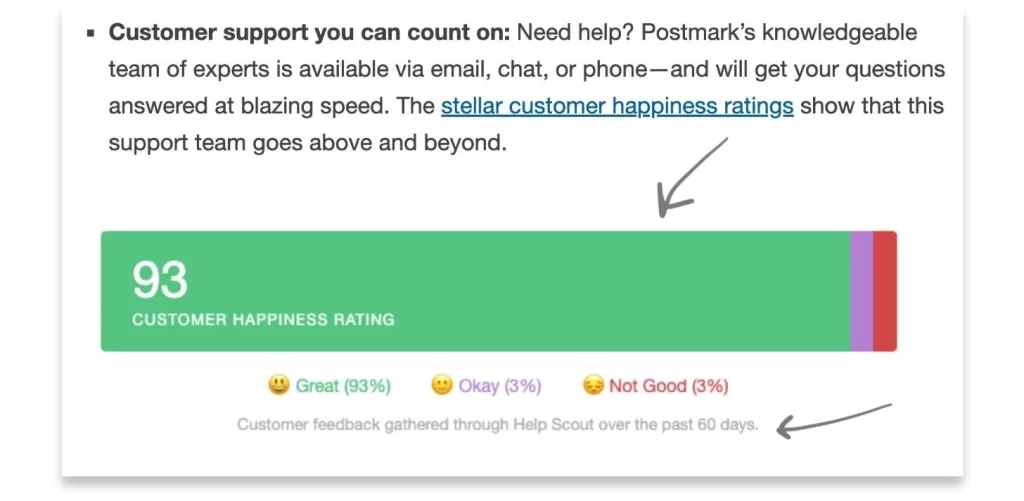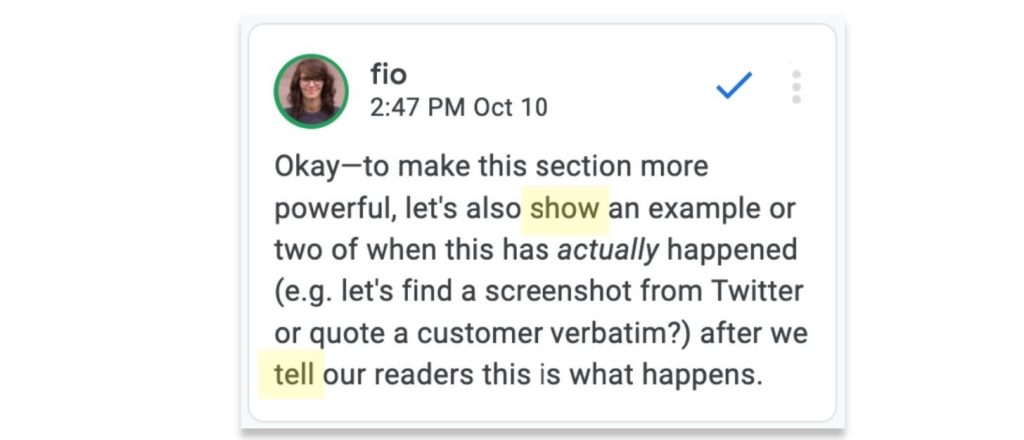Welcome to contentfolks—a fortnightly newsletter with short lessons & ideas about content that makes a difference, sparks action, and truly serves its audience. Thank you for being here!
Hey 👋
Show, don’t tell is a literary technique writers use to convey an idea or feeling rather than simply stating what’s going on. If you Google it, chances are you’ll encounter this (misquoted!) line from playwright A. Chekhov:
“Don’t tell me the moon is shining; show me the glint of light on broken glass.”
Show, don’t tell is also the kind of content marketing advice we all inevitably give or receive at some point in our career.
…but is it accurate?
Show, don’t tell versus show and tell
In content marketing, we often invoke a show, don’t tell approach when talking about the additional details, explanations, and/or examples we should use to help audiences draw their own conclusions:
- Instead of telling them a product feature works in a certain way, we can show it in action and let people experience it for themselves
- Instead of telling them we have a popular product, we can show the number of new customers who signed up in the last 30 days
- Instead of telling them existing customers love our product, we can show a wall of testimonials that immediately proves the point
Nothing wrong with it so far.
The main problem I have with show, don’t tell as a standalone sentence is that it gives you a specific command to do one thing (show) and not the other (tell)—as if showing was inherently good and telling was always bad.
…which is definitely not the case! When you show and tell, the showing reinforces the telling and vice versa, which ultimately makes for stronger content than if you’d just done one of the two things. Incidentally, that’s why this newsletter always has a first section where I tell you about a concept or idea and then a second where I show you a practical example.
Speaking of which…
💡 A practical example 💡
Over the last few weeks, I worked with my colleagues Bettina and Rob on a blog post that highlights the pros and cons of one of our products, Postmark.
In an earlier draft, we told our readers we have “stellar customer happiness ratings” and added a link to the ratings page they could verify the claim on:



In the email deliverability service industry, 93% really is a stellar number—and now our readers has both been told we’re great and showed proof we’re not making it up, which might help them draw their own conclusion about which email provider to choose (hint: it should be us!).
When I edit someone else’s work, ‘show and tell’ is probably the single, most common comment I leave. Another example from this week:

The beauty of this kind of edit is that the fix usually requires minimum effort (in the example above, it was a literal 30-second screenshot addition), but the additional impact it can have on the audience is huge.
So go take a look at your most recent content piece, whether it’s a blog post or landing page or video: did you tell your audience something without showing them what that something looks like?
If the answer is yes… you know what to do next 😉
